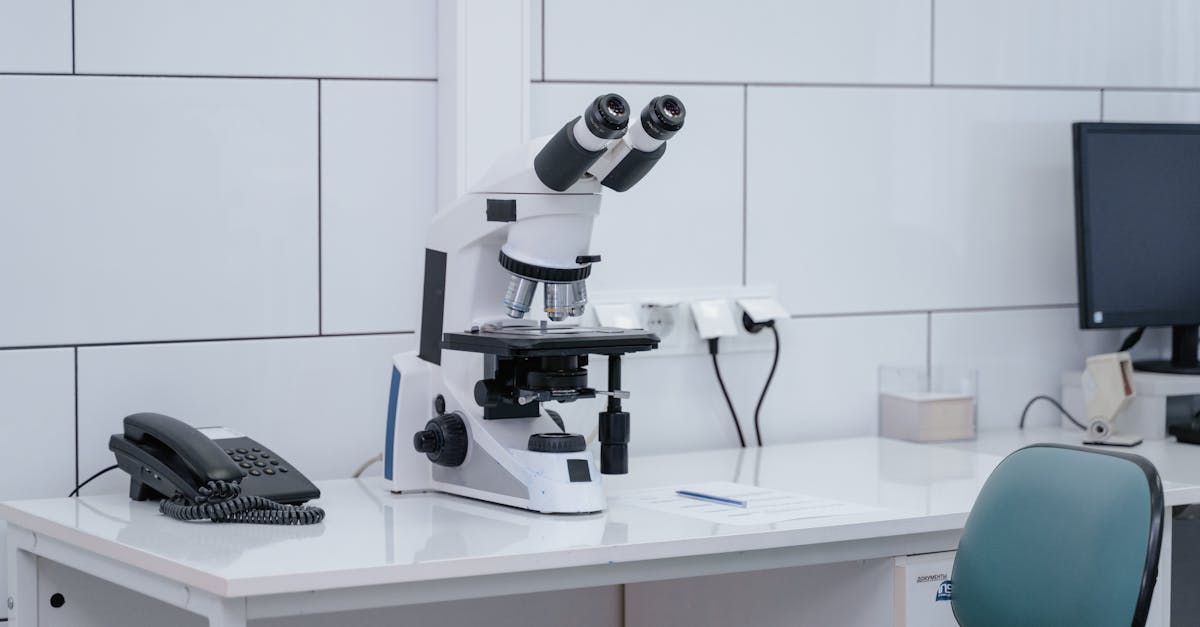The Use of Telemedicine in Clinical Research
The advent of telemedicine has marked a paradigm shift in the delivery of healthcare services. It leverages telecommunications technology to provide clinical care from a distance, breaking down geographical and logistical barriers. This technology has not only transformed routine healthcare but also holds significant promise in clinical research. Telemedicine's application in clinical research encompasses various aspects, including patient recruitment, data collection, monitoring, and follow-up, thereby broadening the scope and efficiency of clinical trials.
The integration of telemedicine into clinical research offers numerous benefits, such as improved accessibility, enhanced data quality, and greater efficiency. However, it also presents several challenges, including technical barriers, data security issues, and regulatory complexities. As we delve deeper into the evolution, benefits, applications, challenges, and future directions of telemedicine in clinical research, it becomes evident that this technological innovation is pivotal in advancing medical science and improving patient outcomes.
Evolution of Telemedicine in Clinical Research
The concept of telemedicine is not entirely new; its roots can be traced back to the early 20th century when radio and telephone technologies were first used for medical consultations. However, it was in the latter half of the 20th century that telemedicine began to gain traction, primarily as a means to provide healthcare services to remote and underserved areas. The advent of the internet and digital communication technologies in the late 20th and early 21st centuries catalyzed the evolution of telemedicine, expanding its scope and application significantly.
The incorporation of telemedicine into clinical research began as researchers recognized the potential of digital technologies to overcome the logistical challenges associated with traditional clinical trials. The early applications were primarily focused on remote monitoring and data collection, enabling researchers to gather data from participants in real-time without the need for physical visits. As technology advanced, so did the capabilities of telemedicine, with the development of sophisticated devices and platforms that could support more complex research activities.
In recent years, the rapid growth of digital health technologies, including wearable devices, mobile health applications, and telehealth platforms, has further propelled the integration of telemedicine into clinical research. These technologies have enabled more precise and continuous monitoring of patients, real-time data transmission, and the ability to conduct virtual consultations and assessments. As a result, telemedicine has become an integral component of modern clinical research, offering a flexible and efficient approach to conducting studies.
Benefits of Telemedicine in Clinical Research
Accessibility and Diversity
One of the most significant advantages of telemedicine in clinical research is its ability to enhance accessibility and diversity among study participants. Traditional clinical trials often face challenges in recruiting a diverse pool of participants, particularly those from rural, remote, or underserved areas. Telemedicine addresses these challenges by enabling remote participation, thereby expanding the reach of clinical trials.
The inclusion of participants from diverse geographic locations ensures that the study population is more representative of the general population, which is crucial for the generalizability of the study findings. For example, in studies related to chronic diseases like diabetes or hypertension, it is important to include participants from various socio-economic backgrounds and ethnicities, as these factors can influence disease prevalence and treatment outcomes.
Furthermore, telemedicine facilitates the participation of individuals who may have mobility issues, limited access to transportation, or other barriers that make it difficult to travel to study sites. This inclusivity not only improves the diversity of the study population but also ensures that the research findings are applicable to a broader spectrum of patients.
Efficiency and Convenience
Telemedicine significantly enhances the efficiency and convenience of conducting clinical research. Traditional clinical trials often involve multiple in-person visits, which can be time-consuming and burdensome for participants. Telemedicine reduces the need for physical travel and on-site visits by enabling virtual consultations, remote monitoring, and digital data submission.
For instance, during the recruitment phase, potential participants can be screened and consented remotely through video calls or online platforms. This not only speeds up the recruitment process but also reduces the costs associated with physical visits and travel reimbursements. Additionally, telemedicine allows for more flexible scheduling of consultations and follow-ups, accommodating the participants' schedules and reducing the likelihood of missed appointments.
The convenience of telemedicine extends to data collection as well. Participants can use mobile health apps or wearable devices to report their symptoms, medication adherence, and other relevant data from the comfort of their homes. This continuous data collection provides researchers with a more comprehensive understanding of the participants' health status and treatment responses, leading to more accurate and reliable study outcomes.
Enhanced Data Collection
Telemedicine enables enhanced data collection through continuous remote monitoring and real-time data capture. Wearable devices, such as fitness trackers, smartwatches, and medical-grade monitors, can track various health parameters, including heart rate, blood pressure, glucose levels, and physical activity. These devices provide a wealth of data that can be used to monitor patients' health status, detect early signs of complications, and assess the effectiveness of treatments.
In addition to wearable devices, mobile health applications play a crucial role in data collection. These apps allow participants to log their symptoms, medication intake, lifestyle habits, and other relevant information. The data collected through these platforms are often transmitted in real-time to the research team, enabling timely analysis and intervention if necessary.
The continuous and comprehensive nature of data collection in telemedicine is particularly valuable in long-term studies and studies involving chronic conditions. For example, in a clinical trial investigating a new treatment for hypertension, continuous monitoring of blood pressure levels provides more detailed insights into the treatment's efficacy compared to traditional periodic measurements.
Moreover, telemedicine facilitates the collection of patient-reported outcomes (PROs), which are essential for understanding the patient's perspective on treatment benefits and side effects. These outcomes are increasingly recognized as important endpoints in clinical research, as they provide valuable insights into the quality of life and overall well-being of patients.
Applications of Telemedicine in Clinical Research
Remote Patient Monitoring
Remote patient monitoring (RPM) is a key application of telemedicine in clinical research. RPM involves the use of digital devices and platforms to monitor patients' health status, symptoms, and treatment adherence from a distance. This approach is particularly beneficial in managing chronic conditions, such as diabetes, heart disease, and asthma, where continuous monitoring is crucial for optimal disease management.
In clinical research, RPM allows researchers to collect real-time data on various health parameters, providing a more comprehensive understanding of the patient's condition. For example, in a study investigating a new drug for diabetes management, continuous glucose monitors (CGMs) can be used to track blood sugar levels throughout the day. This data helps researchers assess the drug's effectiveness in maintaining glucose control and identify any potential side effects.
RPM is also valuable in long-term studies, where frequent in-person visits may not be feasible. By using wearable devices and digital platforms, researchers can monitor participants' health over extended periods, ensuring the collection of consistent and high-quality data. Additionally, RPM can improve patient safety by enabling early detection of adverse events or complications, allowing for timely intervention and adjustment of treatment protocols.
Virtual Consultations and Telehealth Visits
Virtual consultations and telehealth visits are integral components of telemedicine in clinical research. These virtual interactions enable researchers to conduct initial screenings, follow-up assessments, and patient consultations remotely. This approach is particularly advantageous in decentralized clinical trials, where participants may be located across different regions or countries.
During virtual consultations, researchers can review participants' medical histories, assess their eligibility for the study, and provide detailed information about the study protocols and procedures. This process reduces the need for in-person visits, making it more convenient for participants to engage in the study. Furthermore, telehealth visits enable ongoing communication between participants and researchers, ensuring that any issues or concerns are addressed promptly.
Virtual consultations are also valuable for conducting remote assessments of participants' health status and treatment progress. For example, in a clinical trial investigating a new treatment for depression, virtual consultations can be used to conduct psychological assessments and monitor changes in participants' mental health. This approach allows for more frequent and flexible assessments, providing a more accurate picture of the treatment's impact.
Patient Education and Engagement
Patient education and engagement are critical for the success of clinical research, and telemedicine provides an effective platform for these activities. Educating participants about the study's objectives, protocols, and potential risks is essential for obtaining informed consent and ensuring compliance with the study requirements.
Telemedicine platforms can be used to deliver educational materials, conduct informational webinars, and provide one-on-one consultations with study coordinators. These resources help participants understand the importance of the study, the procedures involved, and the potential benefits and risks. Additionally, telemedicine enables researchers to address participants' questions and concerns in real-time, fostering a sense of trust and transparency.
Engaging participants throughout the study is crucial for maintaining their motivation and adherence to the study protocols. Telemedicine offers various tools for enhancing participant engagement, such as reminders for medication intake, appointments, and data submissions. Furthermore, telemedicine platforms often include features for tracking participants' progress and providing feedback, which can motivate participants to stay involved and comply with the study requirements.
Challenges and Considerations
Technical and Infrastructure Barriers
Despite the numerous benefits of telemedicine in clinical research, several challenges and considerations must be addressed. One of the primary challenges is the availability of reliable internet access and digital infrastructure. In many regions, particularly in low-income or rural areas, access to high-speed internet and digital devices may be limited. This digital divide can hinder the participation of certain populations and create disparities in research.
Furthermore, technology literacy is a significant consideration. Not all participants may be familiar with using digital platforms or devices, which can affect their ability to participate effectively. Researchers must provide adequate support and resources to ensure that all participants can engage with the study tools and protocols. This may include providing training sessions, user manuals, and technical support to help participants navigate the digital platforms and devices used in the study.
Data Security and Privacy Concerns
Data security and privacy are critical considerations in telemedicine and clinical research. The collection, transmission, and storage of sensitive patient data must comply with stringent data protection regulations, such as the Health Insurance Portability and Accountability Act (HIPAA) in the United States and the General Data Protection Regulation (GDPR) in the European Union. Ensuring data security involves implementing robust encryption, secure data storage, and strict access controls.
Researchers must also obtain informed consent from participants, clearly explaining how their data will be used, stored, and protected. Maintaining transparency and trust is essential in addressing participants' concerns about data privacy and confidentiality. Additionally, researchers must implement data anonymization techniques to protect participants' identities and ensure that their personal information is not disclosed without their consent.
Regulatory and Compliance Issues
Navigating the regulatory landscape is another challenge in the use of telemedicine in clinical research. Different regions may have varying regulations and guidelines governing telemedicine practices, data protection, and clinical research conduct. Researchers must ensure compliance with all relevant regulations and obtain the necessary approvals from regulatory bodies.
For example, in the United States, the Food and Drug Administration (FDA) provides guidelines for the use of digital health technologies in clinical trials, including requirements for data quality and integrity. Similarly, the European Medicines Agency (EMA) has established guidelines for the use of telemedicine in clinical trials, with a focus on ensuring patient safety and data protection.
Furthermore, maintaining ethical standards and patient safety is paramount. Researchers must carefully design study protocols to protect participants' rights and well-being. This includes obtaining ethical approval from institutional review boards (IRBs) or ethics committees, ensuring informed consent, and implementing measures to address any potential risks associated with telemedicine.
Data Quality and Standardization
Ensuring the quality and standardization of data collected through telemedicine is crucial for the validity and reliability of clinical research. Variability in data collection methods, devices, and platforms can introduce inconsistencies and affect the comparability of results. Researchers must establish standardized protocols for data collection and use validated tools and devices to minimize variability.
Moreover, integrating data from various sources, such as wearable devices, mobile apps, and electronic health records, can be challenging. Researchers must develop strategies for data integration and harmonization to ensure a comprehensive and accurate dataset. This may involve the use of data management platforms and software that can aggregate and standardize data from multiple sources, facilitating data analysis and interpretation.
Case Studies and Examples
Several case studies illustrate the successful implementation of telemedicine in clinical research and highlight the potential benefits and challenges of this approach.
Case Study 1: Remote Monitoring of Heart Failure Patients
In a study conducted by a major medical center, telemedicine was used to remotely monitor patients with heart failure. The study involved the use of wearable devices that tracked patients' vital signs, such as heart rate and blood pressure, as well as symptoms related to heart failure. The data collected were transmitted in real-time to the research team, allowing for continuous monitoring and timely intervention if necessary.
The study demonstrated that remote monitoring improved patient outcomes by enabling early detection of worsening symptoms and facilitating prompt medical interventions. Moreover, the use of telemedicine reduced the need for frequent hospital visits, which was particularly beneficial for patients with mobility issues or those living in remote areas. The study also highlighted the importance of patient education and engagement, as participants were provided with resources to help them understand and manage their condition.
Case Study 2: Decentralized Clinical Trial for a New Diabetes Medication
Another example is a decentralized clinical trial conducted to evaluate a new medication for diabetes management. The trial utilized telemedicine platforms for virtual consultations, remote monitoring, and data collection. Participants were provided with continuous glucose monitors (CGMs) to track their blood sugar levels and mobile apps to log their dietary intake, physical activity, and medication adherence.
The decentralized approach enabled the inclusion of participants from diverse geographic locations, including rural and underserved areas. This diversity was crucial for assessing the medication's efficacy across different populations. The study also demonstrated the efficiency and convenience of telemedicine, as participants were able to complete study-related activities from their homes, reducing the burden of travel and time commitment.
The trial's findings highlighted the importance of ensuring data quality and standardization, as data were collected from various devices and platforms. The research team implemented rigorous data validation and quality control measures to ensure the accuracy and reliability of the data. Additionally, the study emphasized the need for robust data security measures to protect participants' privacy and comply with regulatory requirements.
Case Study 3: Virtual Reality in Patient Education
In a novel application of telemedicine, virtual reality (VR) technology was used to enhance patient education in a clinical trial investigating a new surgical procedure. Participants were provided with VR headsets that allowed them to experience a simulated version of the surgical procedure, including the steps involved, potential risks, and expected outcomes.
The VR experience was designed to help participants better understand the procedure and make informed decisions about their participation in the trial. The study found that the use of VR significantly improved participants' comprehension of the surgical procedure and reduced anxiety related to the surgery. Moreover, the immersive nature of the VR experience made it an engaging and effective tool for patient education.
This case study highlights the potential of emerging technologies, such as VR and augmented reality (AR), to enhance patient education and engagement in clinical research. These technologies can provide participants with a deeper understanding of the study protocols and procedures, leading to more informed and confident participation.
Future Directions and Innovations
The future of telemedicine in clinical research is bright, with several emerging technologies and trends poised to further revolutionize the field. One of the most promising developments is the integration of artificial intelligence (AI) and machine learning (ML) into telemedicine platforms. AI and ML algorithms can analyze large datasets, identify patterns, and make predictions, enabling more personalized and precise treatment approaches.
For example, AI-powered predictive analytics can be used to identify patients who are at high risk of developing certain conditions or experiencing adverse events. This information can help researchers tailor treatment plans and interventions to the individual needs of each patient, improving outcomes and reducing the risk of complications.
Another exciting trend is the use of big data analytics in telemedicine. The vast amounts of data collected through telemedicine platforms, wearable devices, and electronic health records provide a wealth of information that can be used to gain insights into disease mechanisms, treatment efficacy, and patient outcomes. By leveraging big data analytics, researchers can uncover new correlations and trends, leading to more targeted and effective therapies.
The potential for personalized medicine and precision trials is another exciting direction for telemedicine in clinical research. Personalized medicine involves tailoring treatments to the unique genetic, environmental, and lifestyle factors of each patient. Telemedicine enables the collection of detailed, individualized data, which can be used to develop personalized treatment plans and conduct precision trials that focus on specific patient subgroups.
Moreover, the use of blockchain technology in telemedicine and clinical research is gaining attention. Blockchain offers a secure and transparent way to store and share data, ensuring data integrity and preventing unauthorized access. This technology can be used to enhance data security and privacy in clinical research, as well as to facilitate the sharing of data between researchers, healthcare providers, and patients.
Notable Labs: Advancing Clinical Research Through Telemedicine
The advent of telemedicine has revolutionized healthcare delivery, leveraging telecommunications technology to provide clinical care remotely, thus breaking down geographical and logistical barriers. Notable Labs recognizes the transformative potential of telemedicine in clinical research, where its applications extend beyond routine care to include patient recruitment, data collection, monitoring, and follow-up. By integrating telemedicine, Notable Labs enhances the scope and efficiency of clinical trials, making it easier to include diverse populations and manage data with greater precision.
Telemedicine offers numerous benefits in clinical research, including improved accessibility for participants from various geographic locations, enhanced data quality through continuous monitoring, and increased efficiency by reducing the need for physical visits. However, Notable Labs also acknowledges the challenges such as technical barriers, data security, and regulatory complexities. As the field evolves, Notable Labs is committed to addressing these challenges while leveraging the opportunities that telemedicine presents, including the use of emerging technologies like AI, big data analytics, and blockchain.
At Notable Labs, we are dedicated to harnessing the power of telemedicine to advance clinical research, improve patient outcomes, and drive the development of innovative therapies. By fostering collaboration and innovation, we aim to lead the way in making clinical trials more efficient, inclusive, and impactful.
Conclusion
Telemedicine has emerged as a transformative force in clinical research, offering numerous benefits in terms of accessibility, efficiency, and data quality. By enabling remote participation, continuous monitoring, and virtual consultations, telemedicine has the potential to revolutionize the way clinical trials are conducted. It enhances the diversity of study populations, improves patient engagement and compliance, and facilitates the collection of comprehensive and high-quality data.
However, the implementation of telemedicine in clinical research is not without challenges. Technical and infrastructure barriers, data security and privacy concerns, and regulatory complexities must be addressed to ensure the successful integration of telemedicine into clinical research. Researchers must also focus on ensuring data quality and standardization, as well as maintaining ethical standards and patient safety.
Looking to the future, the integration of emerging technologies such as AI, big data analytics, VR, and blockchain holds great promise for further advancing telemedicine in clinical research. These innovations have the potential to enhance personalized medicine, improve patient outcomes, and accelerate the development of new therapies.
In conclusion, telemedicine is poised to play a pivotal role in the future of clinical research. As the field continues to evolve, it is essential for researchers, healthcare providers, and stakeholders to collaborate and innovate, leveraging the opportunities presented by telemedicine to advance medical science and improve patient care. The continued adoption and development of telemedicine in clinical research will undoubtedly lead to more efficient, inclusive, and effective clinical trials, ultimately benefiting patients and advancing healthcare globally.










